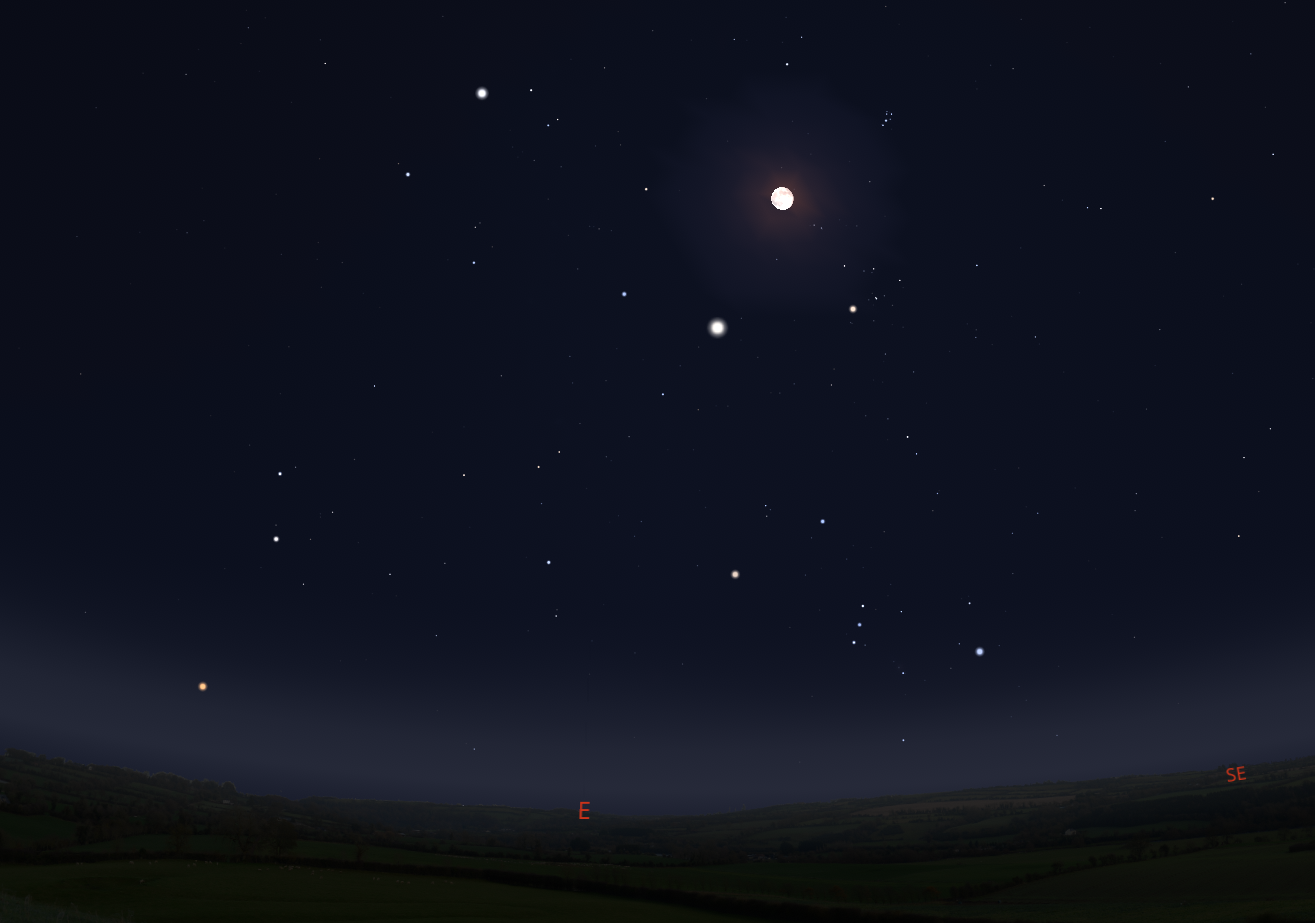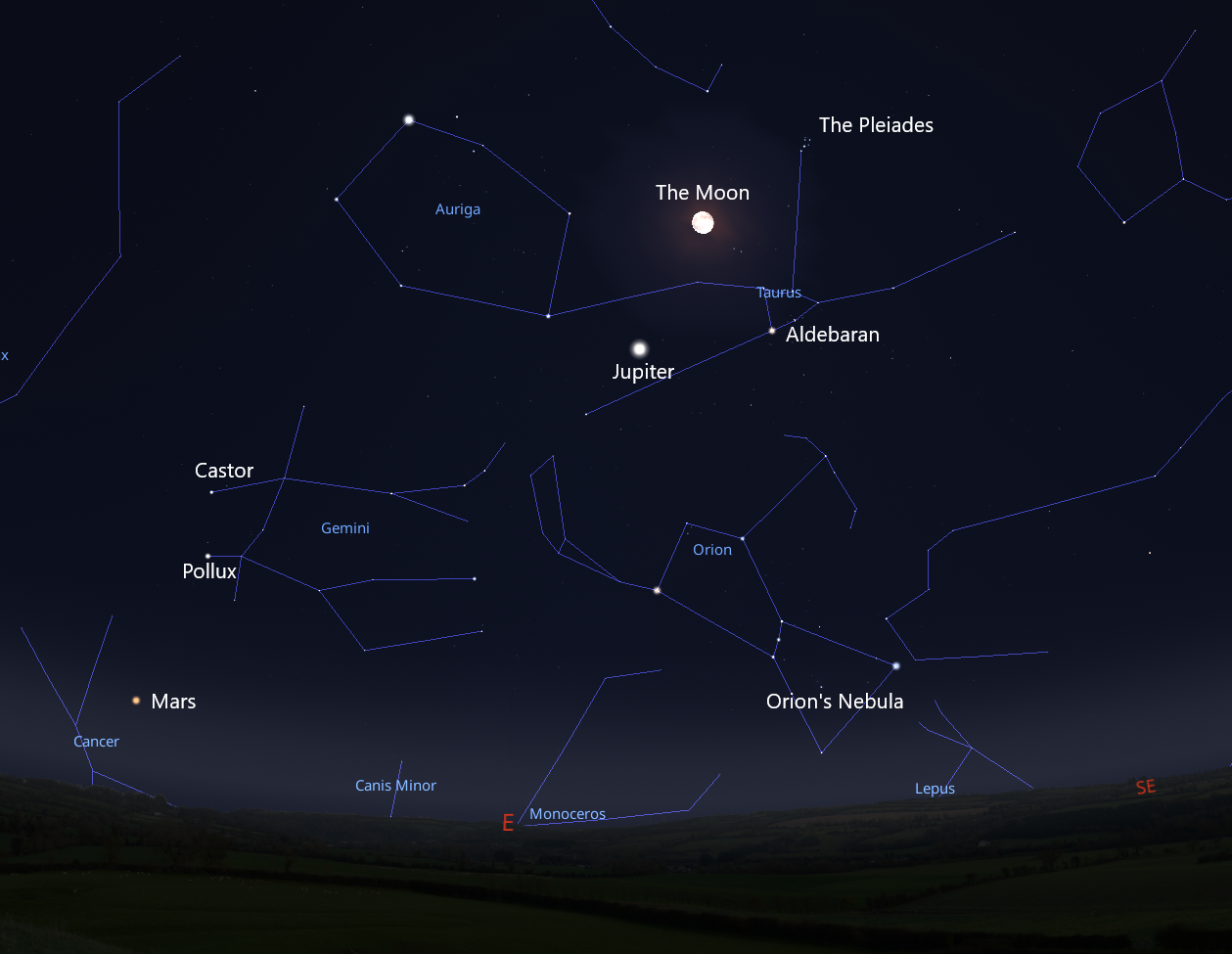If you’ve ever thought about giving stargazing a try, November’s the perfect month to dive in. The nights are long, the skies are clear from the cold air (or as clear as Ireland’s skies can be), and there’s something for everyone up there, from bright planets to dusty nebulae. Whether you’re heading out with a telescope or just gazing up as you walk the dog, here’s what’s in store for stargazers across Ireland this month!
The Planets
Venus, the Evening Star
This month Venus will be our vibrant ‘evening star’. Venus is the brightest planet we can see in the sky, due to Earth’s proximity to it, and it shines brighter than any star, apart from our Sun of course. Venus always appears close to the sun from our view on Earth, because it is closer than we are. However, because of its orbit, it sometimes appears to be leading the sun and sometimes following it. When Venus is trailing the sun, it appears in the sky moments after the sun goes down. This is when it is called an “evening star.” When it’s leading the sun, it appears to rise near dawn, just before the sun comes up. That’s when it’s called a “morning star.” These two names are essentially due to a mistake made by ancient astronomers who did not realise the morning and evening stars were the same object, because at the time we believed the Earth was the center of the solar system. Venus will be visible after sunset every evening throughout November, although it will be low to the horizon. Look to the southwest as it gets dark and search for the brightest object you can see.
Venus is not alone up there, however. Throughout November, you can also catch a glimpse of Saturn, Jupiter and Mars.
Saturn
Saturn will appear in the southern sky after sunset and remain visible for the majority of the night. Saturn will set after 1.30am at the beginning of November, and just before midnight towards the end of the month. If you have a telescope, why not take it out and try to get a glimpse of Saturn’s rings. Saturn’s rings will disappear from our view for a period next year as Saturn reaches its equinox. This means that Saturn will not be tilted, and we will be facing the rings edge on, making them too thin for us to spot them from Earth. Take this opportunity to get a glimpse of them before they’re gone!
Jupiter and Mars
Jupiter will rise from the horizon at 7pm in the northeast at the beginning of the month and by 5pm at the end of the month. Mars will rise from the northeast at 10pm from the beginning of the month and 9pm at the end of the month. Both will be visible until sunrise and will spend the night moving across the sky, from east to west. All of these planets should be easy to spot as they will appear brighter than the majority of our stars and they will not twinkle. Mars also appears slightly red which helps to identify it.
The Return of Winter Constellations
As November progresses, we’ll see the return of some beloved winter constellations. Orion, Taurus, and Gemini begin to rise earlier each night, gracing the eastern sky. Orion, with its distinctive ‘belt’ of three stars, is easy to spot, and helps us find its neighboring constellations. By following Orion’s belt to the right, it will point you straight to Aldebaran, the brightest star in Taurus and a red giant. Keep following that same arc past Aldebaran and you come to the Pleaides open star cluster, also known as the Seven Sisters. This is a very beautiful cluster that can be seen with the naked eye. To the left of Orion, you will find Gemini, with its two bright stars, Pollux and Castor representing the heads of our twins. Hanging around in this part of the sky all month, we have Jupiter and Mars, which will help with locating these vibrant constellations.
Orion also hosts the Orion Nebula (M42), one of the brightest and most beautiful nebulas visible to the naked eye. You can locate it just below Orion’s Belt in the constellation’s “sword.” It will appear as fuzzy stars in light polluted areas but can be easily spotted in greater detail with a pair of binoculars or a small telescope.
The above images show the sky at 10pm on November 16th, facing east.
Image credit: Stellarium
Full Moon on November 15th
November’s full Moon will occur on the 15th and will be our final supermoon of the year. A supermoon occurs when the Moon is physically closer to the Earth than usual, and therefore looks slightly bigger in our sky. The Moon moves rapidly through our sky day by day and this month it will closely pass by Saturn, Jupiter, and Mars on Nov 10th, 17th and 20th respectively, so for extra help in finding those planets, look for the moon on those days.
International Space Station Flyovers
The International Space Station (ISS) will make several passes over Ireland towards the end of November. The ISS looks like a bright, fast-moving star as it zips across the sky, and it’s often visible in the early evening. Even though the ISS circles the Earth every 90 minutes, it doesn’t always pass above Ireland and sometimes it misses us for several days. Check apps like Heavens-Above or NASA’s Spot the Station for exact timings. Some of these flyovers can be seen high in the sky and last several minutes, while some you may only spot for a few seconds. Take the opportunity towards the second half of the month to catch some of these extra-long glimpses and wave up to the astronauts on board.
Make sure to wrap up warm when doing your stargazing, and if possible, try to get away from town or city lights. Give your eyes about 10 minutes to adjust to the dark and you should be well on your way to spotting Orion’s Nebula and much more.
Wishing you starry skies!
Blog post written by Jane Dooley




